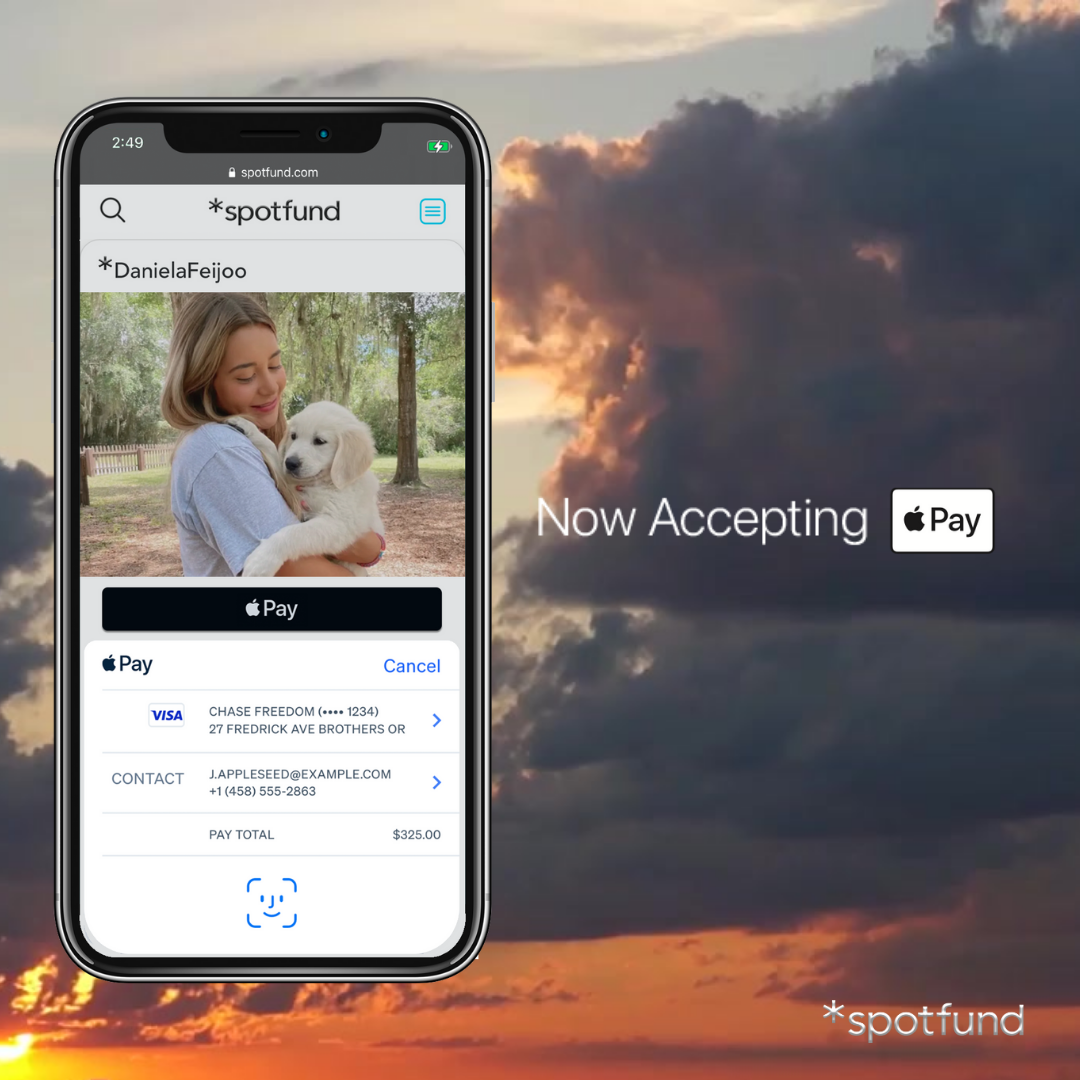In the realm of fundraising and donation, nonprofit organizations and their fundraising teams understand the paramount importance of setting clear and realistic goals for each fundraising initiative. As our world shifts emphatically to a digital-centric approach, online fundraising has become an indispensable tool, presenting unparalleled opportunities for causes across the globe. Yet, this evolution also introduces its own complexities. With tools like fundraising thermometers to track fundraising progress, fundraisers are better equipped to face these challenges head-on. In the subsequent sections, we'll delve into essential strategies that will not only bolster the effectiveness of your next campaign but also ensure that your fundraising efforts resonate deeply and achieve their intended impact in raising funds.

1. Establish a Clear and Tangible Goal
In the realm of fundraising, a goal is not just a destination but a beacon—illuminating the path and inspiring supporters to join the journey. A goal that is both clear and tangible can become the driving force behind a campaign's success.
Understanding the Difference Between Vague and Specific Goals
Imagine two campaigns. The first states, "Help us raise funds for children's education," while the second declares, "Help us raise $10,000 to provide educational materials for 500 students in under-resourced schools." The second campaign not only provides a clear amount to be raised but also paints a vivid picture of the impact.
Vague goals often lack the precision and actionable insights that new donors look for. They might sound noble, but they don't provide a concrete path forward. On the other hand, specific goals give potential supporters a clear understanding of what is needed, how their contributions will be used, and what difference their donations can make. In essence, specificity provides clarity, direction, and a sense of purpose.
Why Specificity Attracts More Donors
At the heart of every donation lies a simple human emotion—empathy. Donors wish to make a difference, and specificity caters to this very emotion. A well-defined goal offers a narrative, allowing donors to visualize the impact of their contributions.
Psychologically, when potential donors see a clear, tangible goal, they can mentally bridge the gap between the current situation and the desired outcome. Specific goals can elicit stronger emotional responses, making individuals more likely to contribute. Moreover, as the goal comes closer to being achieved, the urgency and excitement can motivate even more donors to help reach the target.
Tools and Resources to Gauge the Right Amount for Your Goal
Setting a fundraising goal shouldn't be a shot in the dark. It should be a well-researched decision. Several tools and resources can guide individuals and organizations in setting realistic and achievable goals:
-
Benchmarking: Review past campaigns or similar campaigns by other organizations. Analyze their success, challenges, and the fundraising goals they set. This can provide insights into what's achievable.
-
Cost Analysis: Break down the needs of the project or cause. Whether it's funding a community center or providing scholarships, understand the individual costs involved.
-
Online Calculators: Various online platforms offer fundraising calculators that take into account factors like your donor base, average donation amounts, and campaign duration to suggest an appropriate goal.
-
Feedback from Supporters: Engage with potential donors or previous supporters. Their input can provide valuable insights into what they believe is a reasonable goal and how they might contribute.

2. Engage Donors with a Compelling Story
Stories possess a profound power—the power to transcend logic and touch hearts, the power to inspire action and ignite passion. In the world of online fundraising, where one's message competes with a barrage of digital content every second, a compelling story becomes a powerful fundraising strategy that connects donors to a cause.
Why Storytelling Matters in Online Fundraising
The digital space, vast and infinite, presents both an opportunity and a challenge. While online platforms allow fundraisers to reach a global audience, the sheer volume of information can often cause campaigns to get lost in the noise. Here's where storytelling steps in:
-
Emotional Connection: Stories appeal to the emotional core of humans. While statistics can inform, stories move. They evoke empathy, making the cause personal and relatable.
-
Memorability: In an information-overloaded world, narratives stand out. People remember stories much more than they remember numbers or facts alone.
-
Credibility: Sharing real-life stories or testimonials lends credibility to a successful fundraising campaign. It demonstrates the tangible impact of a donor's contribution.
Crafting a Narrative that Resonates with Potential Donors
While the essence of a story is crucial, how it's told—especially in the digital realm—can make all the difference. Here are some elements to weave into your fundraising narrative:
-
Visuals: A picture speaks a thousand words, and in online fundraising, it could be worth a thousand donations. Use impactful images or videos that depict the challenge, the journey, and the solution. These visuals should evoke emotions and reinforce the essence of the story.
-
Testimonials: Genuine voices from those who've benefited or those who've contributed can be incredibly powerful. Testimonials provide a firsthand account, building trust and making the cause more tangible to potential donors.
-
Data: While stories appeal to the heart, data speaks to the mind. Integrating compelling statistics or clear before-and-after comparisons can amplify the story's impact. It showcases the scale of the challenge and the effectiveness of contributions in addressing it.

3. Optimize for Mobile Donations
As the world increasingly shifts towards mobile devices, the realm of online fundraising is no exception. Today's donors aren't just browsing from desktops; they're making decisions, connecting with causes, and most importantly, donating, all from the convenience of their mobile devices. Hence, optimizing for mobile donations isn't just a recommendation—it's a necessity.
The Significance of Mobile-friendly Donation Platforms
The rise of smartphones and tablets has fundamentally altered online behaviors. Consider the following:
-
Immediate Action: Mobile devices are always within arm's reach. When current donors feel the impulse to contribute, a mobile-optimized platform ensures they can act instantly.
-
Broader Demographic: Younger generations, who are increasingly philanthropic, primarily interact online through mobile devices. By being mobile-friendly, fundraisers tap into this vast and vital demographic.
-
Increased Traffic: Many social media platforms, where fundraising campaigns are often shared, are predominantly accessed via mobile. A mobile-optimized donation page ensures that traffic from such platforms results in successful donations.
Best Practices for Creating a Seamless Mobile Donation Experience
To encourage mobile donations, the user experience must be effortless. Here are some best practices to ensure just that:
-
Responsive Design: Ensure that your fundraising website or platform automatically adjusts to fit the screen size of any device, from smartphones to tablets. This ensures legibility, clarity, and navigability, irrespective of how donors access the platform.
-
Easy-to-use Forms: The donation process should be simple and intuitive. Use minimalistic forms that require only essential information. Autofill capabilities can further simplify the process for repeat donors.
-
Quick Loading Times: Mobile users often have shorter attention spans. If a page takes too long to load, potential donors might abandon the process. Optimize images, reduce unnecessary elements, and utilize content delivery networks to ensure rapid page loads.

4. Leverage Social Media and Peer-to-Peer Fundraising
In today's hyper-connected digital landscape, social media is a formidable force, weaving together communities and catalyzing conversations. When coupled with the power of peer-to-peer fundraising, it amplifies a campaign's reach, resonating with diverse audiences and inspiring collective action.
The Exponential Power of Social Sharing in Fundraising
-
Reach Beyond Borders: Every time a supporter shares your campaign on social platforms, they introduce it to an entirely new network. With each subsequent share, the potential audience grows exponentially, breaking geographical and demographic barriers.
-
Building Trust: Recommendations from friends, family, or peers carry inherent trust. When individuals advocate for a cause, their endorsement often carries more weight than a generic advertisement.
-
Viral Potential: Unique, impactful, and resonant stories can quickly gain traction on social platforms, sparking virality. Such rapid dissemination can dramatically boost awareness and donations in a short span.
Setting Up Peer-to-Peer Fundraising Campaigns
Peer-to-peer fundraising hinges on mobilizing supporters to fundraise on your behalf. Here's how to set them up for fundraising success:
-
Empower with Knowledge: Equip your fundraisers with the necessary information about the cause. The more they understand, the more passionately they can advocate.
-
Provide Tools: Offer resources such as customizable fundraising pages, digital toolkits with images, videos, and pre-written social posts.
-
Incentivize: Motivate your fundraisers with recognition or rewards. This could be in the form of a leaderboard, badges for milestones achieved, or tangible rewards for top fundraisers.
-
Celebrate Successes: Regularly highlight and appreciate the efforts and achievements of your fundraisers. Public recognition on social media or email newsletters can boost morale and motivation.
Best Practices for Social Media Promotion
Promoting your fundraising campaign effectively on social media requires a blend of organic and strategic efforts:
-
Influencers: Collaborating with influencers, especially those who align with your cause, can elevate your campaign's visibility. Their endorsement provides credibility and introduces your cause to their vast follower base.
-
Targeted Ads: Platforms like Facebook and Instagram offer sophisticated ad targeting based on demographics, interests, and behaviors. Invest in these to reach potential donors more effectively.
-
Engaging Content: Regularly post diverse content—stories of impact, behind-the-scenes looks, live Q&A sessions, and more. Content that evokes emotion or provides value fosters deeper engagement.
-
Interact and Respond: Engage with comments, shares, and messages. A responsive and interactive campaign feels more personal, building trust and loyalty.
-
Use Hashtags Strategically: Create a unique hashtag for your campaign and encourage its use. It not only boosts discoverability but also creates a community around your cause.

5. Offer Multiple Donation Tiers with Incentives
The art of fundraising often lies in understanding the delicate balance between appealing to the donor's altruistic motives and offering tangible rewards. Donation tiers with associated incentives play a pivotal role in this balance, guiding donors toward making a contribution that aligns with both their capacity and their desire for recognition or rewards.
The Psychology Behind Donation Tiers and Giving
-
Guided Choices: Presented with multiple options, donors can select a tier that aligns with their financial capacity, allowing them to contribute comfortably.
-
Anchoring Effect: Introducing higher donation amounts can often make middle-tier amounts seem more reasonable, thereby potentially increasing the average donation.
-
Tangible Recognition: By associating tangible rewards with specific tiers, donors often feel a sense of reciprocity. They're not just giving money; they're receiving something in return, be it recognition or a tangible item.
How to Set Up Tiered Giving
-
Start with a Base: Always have an option for donors who might not be able to contribute much but still wish to support. This base tier serves as an entry point and ensures inclusivity.
-
Middle Tiers are Crucial: Most donors will gravitate towards the middle tiers. Ensure these tiers are set at amounts that can significantly benefit the campaign while still being attainable for a majority of donors.
-
Highlight a Generous Tier: This is for potential major donors. While fewer might choose this, the ones who do can make a substantial difference to your fundraising efforts.
Ideas for Incentives
Incentives can range from simple acknowledgments to exclusive experiences. Here are some ideas:
-
Shoutouts: Recognize donors on social media, in newsletters, or during live events. A simple thank-you can mean a lot.
-
Merchandise: Offer branded items such as t-shirts, mugs, or tote bags. Not only do they serve as a token of appreciation, but they also act as promotional tools when used in public.
-
Digital Rewards: Think e-books, exclusive video content, or wallpapers. They're cost-effective and can be easily distributed.
-
Events and Webinars: Offer donors exclusive access to workshops, webinars, or online events. This not only incentivizes donations but also deepens their engagement with your cause.
-
Unique Experiences: For top-tier donors, consider offering exclusive experiences. This could be a one-on-one session with someone significant from your organization, a behind-the-scenes tour, or even an opportunity to be a part of the project they're supporting.
-
Name Recognition: Depending on your project, consider naming something after major donors—a room in a building, a scholarship, or a program.

Recommendation: *spotfund Free Online Peer-to-Peer Fundraising Platform
In the crowded landscape of online fundraising platforms, *spotfund stands out as a top-tier choice, particularly for those who prioritize ease-of-use, efficiency, and security.
-
Mobile-Friendly Design: With an increasing number of donors preferring to contribute via mobile devices, *spotfund's mobile-responsive interface ensures that users have a seamless experience, irrespective of the device they use. This means donors can contribute on-the-go, amplifying the chances of impromptu donations.
-
Simplicity of Campaign Creation: For those who may not be tech-savvy or simply want to launch a campaign swiftly, *spotfund's intuitive platform comes as a breath of fresh air. With user-friendly tools and a straightforward process, even novices can set up their campaign within minutes.
-
Integrated Social Features: In today's digital age, the success of a fundraising campaign is often tied to its virality on social media. *spotfund excels here by offering robust social integration features. With just a few clicks, fundraisers can share their campaigns across various platforms, enhancing visibility and increasing the potential for donations.
-
Safety and Security: Donors and fundraisers alike can have peace of mind knowing that *spotfund prioritizes their safety. With state-of-the-art security protocols, every transaction remains protected, ensuring that personal and financial information stays confidential.
-
Swift Withdrawal Process: Liquidity can be crucial, especially for urgent causes. *spotfund recognizes this by offering a quick withdrawal feature. This ensures that the funds raised are available promptly, enabling immediate use for the intended purpose.
In conclusion, for anyone seeking a modern, reliable, and efficient platform for peer-to-peer fundraising, *spotfund emerges as a top recommendation. Create a fundraising campaign to reach your goal now!

